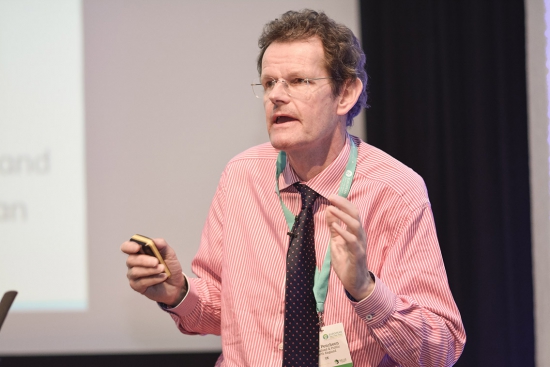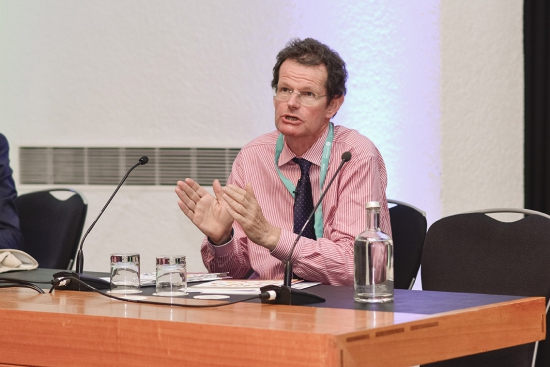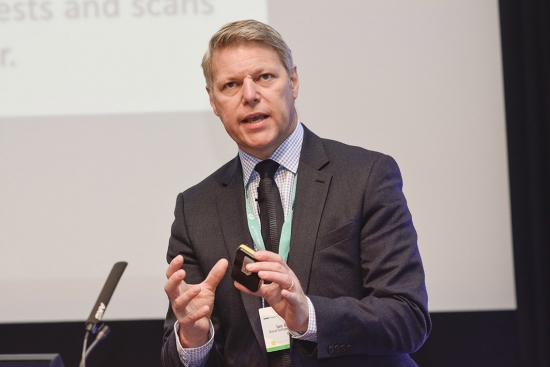
The single most important issue affecting health globally is sustainability, and it’s an issue that needs to be tackled across three mutually reinforcing dimensions — financial; environmental; and social and ethical.
This was the message from Dr David Pencheon, a director at NHS England and Public Health England, to delegates at the European Healthcare Design 2015 Congress at the Royal College of Physicians in London.
But he also conceded that large-scale transformation in line with these dimensions presents huge challenges: “It’s all too easy to say you’re going to do things in partnership but, in reality, it’s incredibly difficult — especially when you’re trained as a technical fixer rather than a system designer. Absolute transformation is not just about hospitals but needs to take place in society as a whole.”
Although their scale might be modest, changes at a local, grassroots level are already taking place. Pointing out that 70% of the NHS’ carbon footprint is accounted for by procurement, Dr Pencheon highlighted John Hughes’ work at Queens Medical Centre in Nottingham, where, as an assistant head of catering, he “revolutionised” the food system, sourcing local produce, and working with farmers to deliver nutritious foods based around a seasonal diet. Hughes’ team includes people with learning difficulties, providing them with meaningful work. As well as the economic benefits, Hughes’ programme is not only helping improve the patient experience, stressed Dr Pencheon, but also health outcomes.
Socially, the future healthcare system has to recognise that it involves people, said Dr Pencheon. He highlighted the philosophy of US integrated health consortium Kaiser Permanente, which sees unplanned hospital admissions as a sign of system failure. Refusing to tackle such problems — possibly through imposing penalties — is likely to see a collapse in a socially compassionate system of care. He also underlined the important role hospitals can play in ethical procurement, pointing out that most surgical instruments start their manufacturing process in northern Pakistan, where working conditions are poor to non-existent and, ironically, contribute to the health problems hospitals are trying to solve.
It follows, too, that robust financial models are also key to sustainability of healthcare. By way of example, Dr Pencheon drew attention to a hospital in the Himalayas powered by solar energy. A new funding model lets the hospital pay for its rig over eight years — bringing it solar power and preventing power cuts that can so often interrupt treatment.
Key opportunities for the future hospital
He concluded by outlining five key opportunities for the future hospital and healthcare system to grasp:
- creating flexibility, as this will increase value and health
- prevention through partnerships and incentives, with financial rewards for absence not presence
- new models of care, with the default place of care being the home;
- empowered staff and patients with IT and near-patient small technology; and
- hospitals, health systems and professionals to become visible exemplars of a safe and sustainable future.
Examples of how some hospitals are beginning to explore some of these opportunities were presented by Dr Ian Bullock, executive director of clinical standards at the Royal College of Physicians (RCP).
Setting the scene for the need for change, Dr Bullock pointed to the fragmented nature of care, policy developments that have led to a medical workforce crisis, increasing levels of chronic illnesses and mental disorders, and an over-reliance on specialists. Issues of poor quality care and unsafe environments are never far from the headlines, with some extreme cases, such as the routine neglect at Stafford Hospital in the UK, with patients dying unnecessarily, representing what Dr Bullock called “a systematic failure of care”.
Development sites to explore system transformation
Very much at the forefront of this appetite for change, the RCP, in 2012, established a Future Hospital Commission to deliver a programme and policy context underpinning an agenda for transformation. Following the commission’s report in 2013, four development sites were launched to explore future hospital and new care model concepts. Said Dr Bullock: “Strategic links and trying to join the dots up is crucial because the problem is bigger than any single provider. So, we moved from bell ringing in 2013/14 to articulation of how we can develop new models of care and system redesign and transformation.”

In keeping with the major health trends driving the need for change, three of the four development sites are focused around improving care of frail older patients, while the fourth aims to streamline the care of patients admitted via acute medical admissions services.
Outlining the development site at Worthing Hospital, Dr Bullock explained that the project aims to standardise pathways, streamline care and achieve safe, efficient clinical management for all patients. The emergency floor at the hospital brings together acute medicine, an acute frailty unit and acute surgery admissions into one footprint, in order to provide joined-up integrated care from arrival to discharge. The site delivers care via a multi-disciplinary team of clinicians, who also have access to social workers, a pharmacy team, physiotherapy and occupational therapy.
Said Bullock: “What we’re seeing from the data is some really interesting trends in how we can manage the pressures in the system by the design of the environment and managing patient flow.”
However, he also cautioned against what he termed “initiative-itis”. He explained: “Currently there is a rash developing in England in the NHS, with thought leadership impacting on many different initiatives. We must get data that is meaningful across all sites, as those key metrics will form part of a broader discussion with government.”

